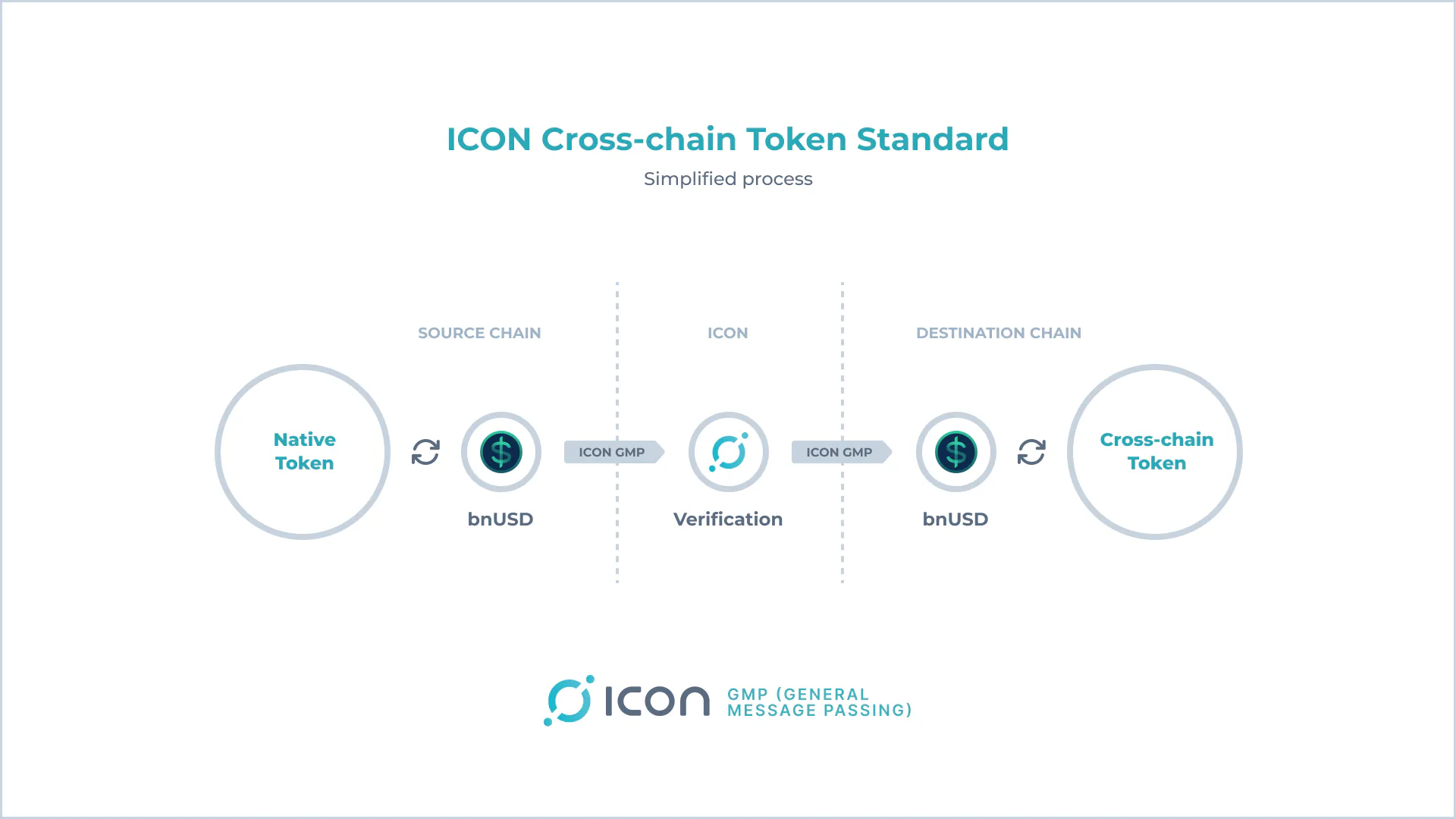Introducing ICON’s Cross-chain Token Standard
Gone are the days when ICON's cross-chain strategy relied on wrapped token swaps. While wrapped assets were essential for their time—enabling assets to move to new blockchains and laying the groundwork for cross-chain transfers—they had their limitations. Wrapped assets played a crucial role in expanding DeFi into a multichain framework and will likely always have a place. However, the wrapped asset model has inherent drawbacks. The primary limitation is that these assets are non-fungible across different interoperability protocols since each protocol deploys wrapped assets on behalf of a project. This results in completely different, non-fungible assets for each route taken, leading to liquidity fragmentation, an undesirable user experience, and less efficient markets.
ICON’s new direction focuses on offering users native transfers. Similar to how we deployed bnUSD, we aim to provide this functionality to all projects' liquidity on Balanced. If a project chooses Balanced for its liquidity, we can offer its token on any of the Balanced-connected chains, delivering a native experience.
It's important to note that this cross-chain standard will adhere to ICON’s token standard framework and to ERC20 standards for tokens on the EVM chain.
Why is this significant?
This standard, integrated through ICON’s cross-chain DEX, Balanced, allows any project to launch its token on any blockchain connected to Balanced. This means the project only needs to deploy liquidity into a single pool rather than multiple pools across different chains. This approach maximizes the efficiency of liquidity usage and gives the project greater control over its tokens. They gain the ability to own, upgrade, and customize their tokens across various blockchains, streamlining operations and enhancing scalability.

This standard builds upon the foundational framework of Balanced's bnUSD. Venture23 will lead its development and implementation, with funding approved through ICON’s Contribution Proposal System (CPS). Initially, the focus will be on the ICON, EVM, and SUI Move platforms, with all development and implementation targeted for completion within approximately two months. Stay tuned for further updates.
Disclaimer: The content of this article solely reflects the author's opinion and does not represent the platform in any capacity. This article is not intended to serve as a reference for making investment decisions.
You may also like
SHM is live! Bullish or bearish? Join to share 3,360 SHM!

MYX Finance Hits Big: 30,296% Oversubscription on CEX Wallet, $51.31M Trading Volume, and Listed on Bitget

OBOL is live! Bullish or bearish? Join to share 4,800 OBOL!

VIPBitget VIP Weekly Research Insights
Real yield protocols are gaining traction as a resilient sector in the crypto market, enabling users to navigate both bull and bear cycles effectively. Unlike narrative-driven projects that rely on token sales, real yield projects generate actual protocol revenue and return value to the community through mechanisms like fee buybacks and token burns. These sustainable business models offer greater resilience across market cycles, making them well-suited for mid- to long-term allocations. Projects such as AAVE, JTO, JUP, and CAKE have established robust revenue frameworks, serving as leading examples across the EVM, Solana, and BSC ecosystems — and are well worth watching.
